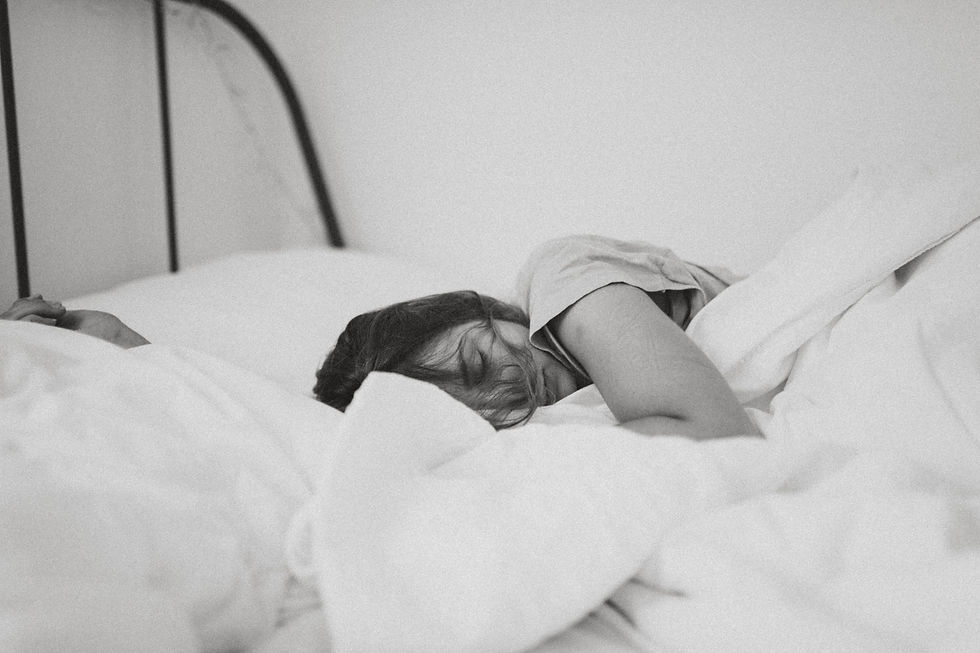The Integrated Spring-Mass Model: How Your Body Works as a System of Springs
- kcraig26
- Jan 9, 2020
- 5 min read
Updated: Jan 23, 2021
For a Medical Disclaimer, please read it here.
In my last post, I briefly went over some history about biomechanics and the models that led to this new Integrated Spring-Mass Model (aka the Human Spring Model) developed by Dr James Stoxen DC., FSSEMM (hon).
In this segment, I will talk more about the Human Spring Model itself and why its use in performance and everyday life can have a long-lasting effect on a person’s life. The first two questions from the foreword are answered here. Information in this post is taken from the book, The Human Spring Approach to Thoracic Outlet Syndrome (TOS).
The design of the human spring in this model is engineered using bones, muscles, tendons, ligaments, and joints. The spring capabilities of different parts of the body act in similar ways to four different spring types used in machines:
Leaf Spring: normally used in large automobiles for carrying heavy loads, it is an arc-shape spring made of the same material in smaller sizes stacked on top of one another.

Figure 4: A Typical Automobile Leaf Spring
Torsion Spring: a specific type of spring that reacts to rotational forces that exert force in a rotational motion about the central axis.

Figure 5: Torsion Spring
Extension Spring: a spring that absorbs and stores energy and creates resistance to pulling forces.

Figure 6: Extension Springs
Compression Spring: open-coil circular springs that store compressive energy, such as those found in a mattress.

Figure 7: Compression Springs
Defined as “Living Springs”, the arch of the foot acts as a leaf spring; the menisci, cartilage, and vertebral discs act as compression springs; tendons are modeled as extension springs; and the lower limbs, spinal column, and overall human body are torsion springs.
The mass in this model is the head, the only area of the body that does not have spring capabilities. The average mass of the head is 9-12 lbm.
Arch of the foot
Subtalar Joint (just below the ankle joint)
Ankle Mortise (where the shin bone rests on the ankle)
Knee
Hips
Spine-Chest
Head
The most important part of this model that is often overlooked by medical professionals is the leaf spring capability of the arch of the foot. The arch is suspended from above by tendons attached to calf muscles; these tendons are the tibialis posterior, tibialis anterior, peroneus longus, and peroneus brevis. The design is like a suspension bridge, which uses vertical cables like bungee cords that allow the bridge platform to slightly move up and down.

Figure 8: Mid-Foot Landing Walk or Run
Another impressive feat to note is that the human foot has 33 movable joints that allow the foot to deform during impact. Stoxen points out that this three-dimensional deformation can allow the foot to form the perfect shape to allow a position of the leg to be exactly perpendicular to the pull of gravity, allowing full use of the spring capabilities of the muscles and tendons in the leg.
This resonates with me since I've had pains in my knees and ankles for a while. In my case, Dr. Stoxen’s examination revealed I had stiffness and even locking or subluxations (slight misalignments) of the metatarsal cuneiform joints of my foot (where the first toe bone meets the bones on the top of the foot). He said this was likely because of a weakening of the spring suspension mechanism or muscles and tendons that suspend my arch as a flexible leaf spring sling shot. Weakened sling shot muscles simply allow the arch leaf spring to drop and lock. Much of the weakness can be attributed to my lack of training of the sling shot muscles. Further weakness comes from binding footwear worn 8-12 hours per day that weakened, locked, and subluxated the joints of my foot leaf spring. Ill fitting footwear can physically deform the perfect three-dimensional form of the foot leading to scar tissue which stiffens or locks the spring and deforms the physical shape, reducing the potential elastic deformity that is necessary for efficient stress- and strain-free motion.
Also, several years of being active in soccer, track, and recreational activities caused stress and strain injuries that healed with scar tissue, which further locked up some of the joints in my feet.
When the foot can’t deform the way it is engineered, it is impossible to keep a perpendicular pull of gravity on the leg, and it puts abnormal stress on the supporting muscles in the leg. I’ll explain more on the effects of abnormal movements in a later post.

Figure 9: Supportive Cuff Muscles and Tendons
Moving up the floors in the spring, the spring of the knee consists of the quadriceps, hamstrings, adductors, and abductors. They suspend the femur over the tibial plateau from the top. The knee, like other joints, has space in it to allow the impact force to be absorbed like a spring mechanism into the lower body without damaging the cartilage, ligaments, or tendons.
Next are the hips, which consist of the glute muscles, external rotators, and iliopsoas. They suspend the hip and leg from the top and sides. All these spring floors in the lower body operate perfectly together to absorb and recycle energy, which is why balance in strength is important.
After the spring floor of the hips are the chest-spine and neck-head-shoulders. A lot of different impacts are absorbed at the spring floor involving the spinal column. The spine can twist and spring in all different configurations and shapes to accept the load; this enables the spine to spring-back impacts and twist at millions of different angle combinations.
The spine is also enhanced by 26 discs, which are compression springs. Most doctors refer to them as shock absorbers, yet a shock absorber is not able to return energy to the structure. The discs load and unload impact forces better to absorb collisions, and the space provided by these mini springs allows safe passage of the nerves between the vertebrae. This explains why athletes can twist, get tackled, bounce, fall, sprint, and get hit without getting hurt most of the time.

Figure 10: Forces on the Human Spring
While the final two spring floors are listed separately, they have many interrelated connections. The shoulders and arms connect where the collarbone attaches to the sternum (or breastbone); the rest of the weight is suspended over the top of the rib cage by a springy system muscle group. Neck-to-shoulder suspension muscles consist of the trapezius muscles and the levator scapula, while the scalene muscles and anterior cervical muscles connect the neck and chest. Finally, the head rests upon the neck.
To understand the anatomy talked about in this post, I recommend going to Zygote; this is a really neat (and free) 3d anatomy model.
The next segments in this blog will incorporate this model into different aspects of athleticism. The next post is about how to understand limitations of an athlete’s optimal performance, and how the human spring model plays an important part in raising those limitations. This information is also useful for understanding the movements and health concerns of everyday life; whether you're suffering from joint pains from athletics, work, or aging, please continue on!
Interested in learning more about the capabilities of the human spring? Get Dr. Stoxen’s Book “The Human Spring Approach to Thoracic Outlet Syndrome” on Amazon here.




Comments